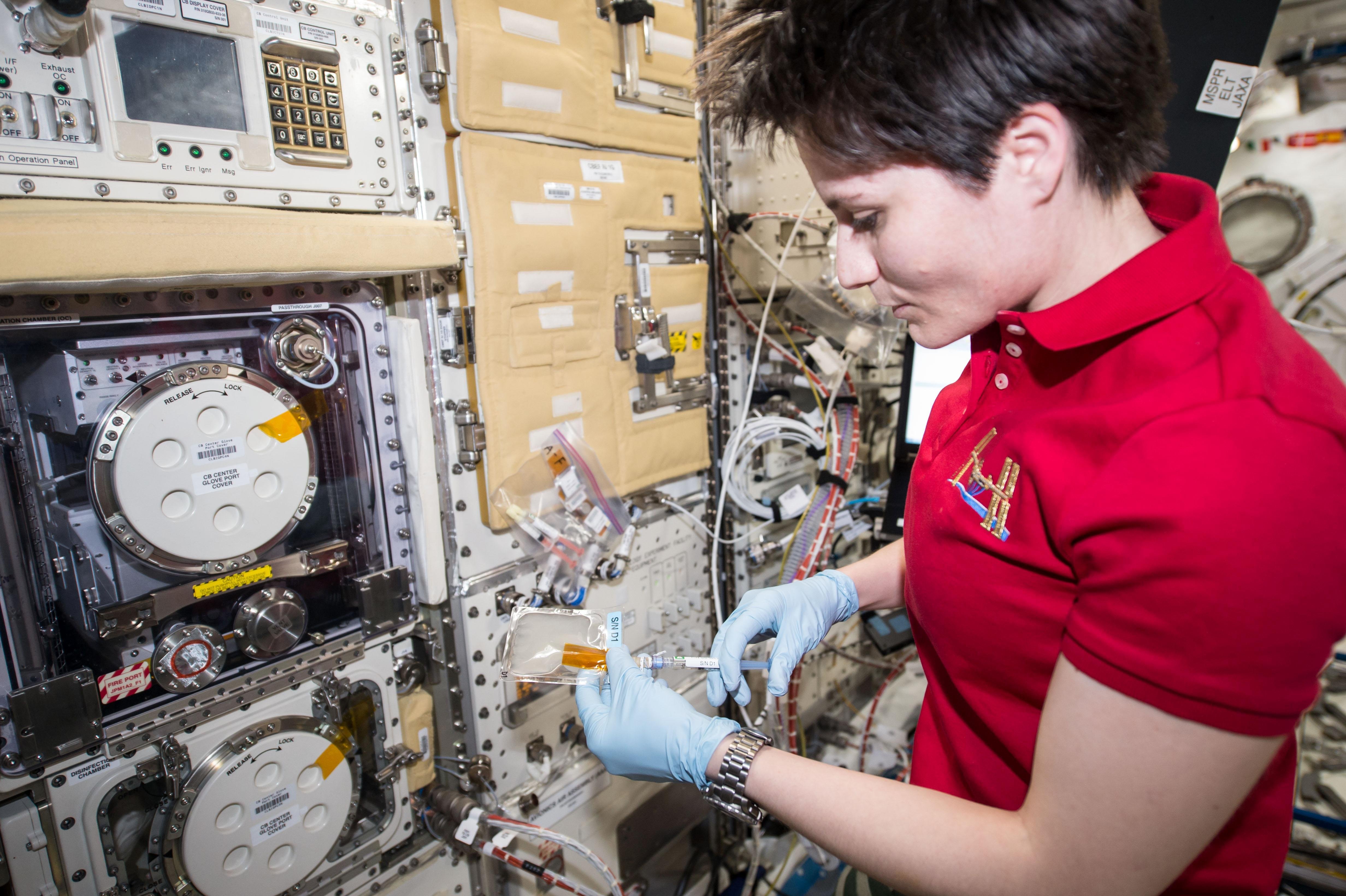- completed
[Epigenetics]
Epigenetics in spaceflown C. elegans
- Biology and Biotechnology
ISS Science for Everyone
SCIENCE OBJECTIVES FOR EVERYONE
Epigenetics in spaceflown C. elegans (Epigenetics) investigates whether adaptations to microgravity transmit from one cell generation to another without changing the basic DNA of the organism. Epigenetics utilizes C. elegans, a millimeter-long roundworm that is widely used as a model for larger organisms. Four generations of the C. elegans worms are grown aboard the International Space Station (ISS), with adults from each generation preserved for later study on Earth.
Experiment Description
RESEARCH OVERVIEW
- The incidence of spaceflight-induced(patho)physiological adaptations, such as decreases in skeletal muscle mass and bone mass, is a major obstacle for long-term space exploration. Epigenetics has been identified as an inheritable change in gene expression and cellular phenotype through chromatin remodeling with histone modifications, DNA methylations and RNA interference, but not changes in the underlying DNA nucleotide sequence. One example of epigenetic changes is the process of cellular differentiation. Recent studies suggest that epigenetics has the potential to explain mechanisms of aging and several diseases, including cancer. However, there is no information on whether epigenetic changes occur in each cell during space flight and how relationships between the changes and the spaceflight-induced adaptations are presented.
- In previous spaceflight experiments using the nematode C. elegans, ICE-First (2004) and CERISE (2009), spaceflight-induced transcriptional alterations of the muscle- and metabolic-related genes were found. Moreover, some histone deacetylase genes, such as hda-4 and sir-2.1, were induced in spaceflown C. elegans. Since these products are involved in transcriptional regulation and gene silencing through histone modification, a working hypothesis was established: microgravity affects epigenetic changes. The hypothesis is to be verified by this proposal.
- If epigenetic changes occur in response to microgravity and it leads decreases in muscle and metabolism in the spaceflown C. elegans, it strongly suggests that similar epigenetic changes probably occur in humans. It may at least partially explain why muscle development responses to exercise training are reduced, and the difficulty of maintaining the muscle and bone mass of astronauts during spaceflight.
DESCRIPTION
The research team tests three experimental conditions in each culture: ground control, 1G (control) centrifuge onboard the International Space Station (ISS), and micro-gravity samples onboard ISS. All larvae are maintained in stasis within S basal medium until initiation of the experiment. The experiment is activated once onboard the ISS by reintroducing animals to bacterial food. All experiments are carried out under temperature controlled conditions in the Cell Biology Experiment Facility (CBEF) within the KIBO module. Each duplicated culture of N2 wild type, hda-4 mutant, and sir-2.1 mutant is grown for 5days at 20°C. To separate the adult animals and the next progenies (L1 larvae), the liquid culture is filtered with 10μm nylon mesh filter. The adult animals trapped onto the filter are storage at −95°C in MELFI. The progenies passed through are inoculated again into new culture bag and grown for additional 5 days at 20°C. The sequential culturing and filtration are carried out until fourth generation. After recovering these frozen samples on the earth, the team studies the entire gene and protein expression, histone modifications, microRNA expression, and physiological changes in response to space environment.
Media Gallery


Applications
SPACE APPLICATIONS
Epigenetics means "outside the genes," or changes that can be inherited for several generations without affecting an organism's basic DNA. Researchers have proposed that microgravity causes such epigenetic changes in muscle, bone, and other cells that carry over through multiple generations, thus canceling exercise and other counter-measures designed to protect astronauts. Studying the growth of multiple generations of C. elegans in microgravity can enable investigators to study subtle shifts in gene expressions that may also occur in humans.
EARTH APPLICATIONS
Bone and muscle loss are challenges facing an aging population on Earth, and patients after surgery. As with astronauts, proper exercise often is not possible to counteract this kind of deconditioning. Studies of C. elegans in microgravity help determine whether these losses occur as epigenetic shifts that might be fought using different medicines or therapies.
Operations
OPERATIONAL REQUIREMENTS AND PROTOCOLS
Daily experimental script is critical. All of the samples should be returned frozen in cold storage.
1) Crew members inject C. elegans worms into culture bag and start incubation in CBEF. 2) Adult worms are trapped on filter using filter holder, and filter holder is stowed in MELFI at -95°C. 2 ml of filtered medium containing young worms is injected into another culture bag and incubation at 20°C is started. 3) The adult worms from the second step are trapped on a filter using filter holder, and the filter holder is stowed in MELFI at -95°C. The filtered medium containing young worms is stowed at 4°C. 4) 2 ml of filtered medium containing young worms, from the previous step, is injected into another culture bag and incubation is started at 20°C. 5) Adult worms from previous step are trapped on filter using filter holder, and filter holder is stowed in MELFI at -95°C. 2 ml of filtered medium containing young worms is injected into another culture bag and another incubation is started at 20°C. 6) Adult worms from previous step are trapped on filter using filter holder, and filter holder is stowed in MELFI at -95°C, and the filtered medium containing young worms is also in MELFI at -95°C for return to Earth.
Publications
PRINCIPAL INVESTIGATOR(S)
HIGASHITANI Atsushi [Tohoku University]
Unless specified otherwise, rights to all images belong to ©JAXA



